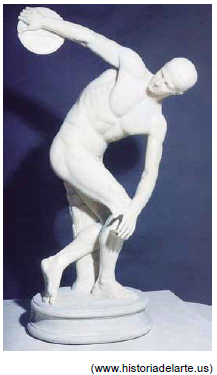Questões de Vestibular UEA 2019 para Prova de Conhecimentos Gerais
Foram encontradas 84 questões
Wood wide web: trees’ social networks are mapped
Research has shown that beneath every forest and wood there is a complex underground web of roots, fungi and bacteria helping to connect trees and plants to one another. This subterranean social network, nearly 500 million years old, has become known as the “wood wide web”. Now, an international study has produced the first global map of the “mycorrhizal fungi networks” dominating this secretive world.
Using machine-learning, researchers from the Crowther Lab at ETH Zurich, Switzerland, and Stanford University in the US used the database of the Global Forest Initiative, which covers 1.2 million forest tree plots with 28,000 species, from more than 70 countries. Using millions of direct observations of trees and their symbiotic associations on the ground, the researchers could build models from the bottom up to visualise these fungal networks for the first time. Prof Thomas Crowther, one of the authors of the report, told the BBC, “It’s the first time that we’ve been able to understand the world beneath our feet, but at a global scale.”
The research reveals how important mycorrhizal networks are to limiting climate change — and how vulnerable they are to the effects of it. “Just like an Magnetic Resonance Imaging scan of the brain helps us to understand how the brain works, this global map of the fungi beneath the soil helps us to understand how global ecosystems work,” said Prof Crowther. “What we find is that certain types of microorganisms live in certain parts of the world, and by understanding that we can figure out how to restore different types of ecosystems and also how the climate is changing.” Losing chunks of the wood wide web could well increase “the feedback loop of warming temperatures and carbon emissions.”
Mycorrhizal fungi are those that form a symbiotic relationship with plants. There are two main groups of mycorrhizal fungi: arbuscular fungi (AM) that penetrate the host’s roots, and ectomycorrhizal fungi (EM) which surround the tree’s roots without penetrating them.
(Claire Marshall. www.bbc.com, 15.05.2019. Adaptado.)
Wood wide web: trees’ social networks are mapped
Research has shown that beneath every forest and wood there is a complex underground web of roots, fungi and bacteria helping to connect trees and plants to one another. This subterranean social network, nearly 500 million years old, has become known as the “wood wide web”. Now, an international study has produced the first global map of the “mycorrhizal fungi networks” dominating this secretive world.
Using machine-learning, researchers from the Crowther Lab at ETH Zurich, Switzerland, and Stanford University in the US used the database of the Global Forest Initiative, which covers 1.2 million forest tree plots with 28,000 species, from more than 70 countries. Using millions of direct observations of trees and their symbiotic associations on the ground, the researchers could build models from the bottom up to visualise these fungal networks for the first time. Prof Thomas Crowther, one of the authors of the report, told the BBC, “It’s the first time that we’ve been able to understand the world beneath our feet, but at a global scale.”
The research reveals how important mycorrhizal networks are to limiting climate change — and how vulnerable they are to the effects of it. “Just like an Magnetic Resonance Imaging scan of the brain helps us to understand how the brain works, this global map of the fungi beneath the soil helps us to understand how global ecosystems work,” said Prof Crowther. “What we find is that certain types of microorganisms live in certain parts of the world, and by understanding that we can figure out how to restore different types of ecosystems and also how the climate is changing.” Losing chunks of the wood wide web could well increase “the feedback loop of warming temperatures and carbon emissions.”
Mycorrhizal fungi are those that form a symbiotic relationship with plants. There are two main groups of mycorrhizal fungi: arbuscular fungi (AM) that penetrate the host’s roots, and ectomycorrhizal fungi (EM) which surround the tree’s roots without penetrating them.
(Claire Marshall. www.bbc.com, 15.05.2019. Adaptado.)
(Henri-Irénée Marrou. De la connaissance historique, 1975. Adaptado.)
Depreende-se do texto que as condições essenciais para a pesquisa histórica são

Pertencente ao Museu Nacional de Roma, o Discóbolo Lancellotti assinala
(Perry Anderson. Linhagens do Estado absolutista, 2016.)
O excerto do livro Linhagens do Estado absolutista descreve